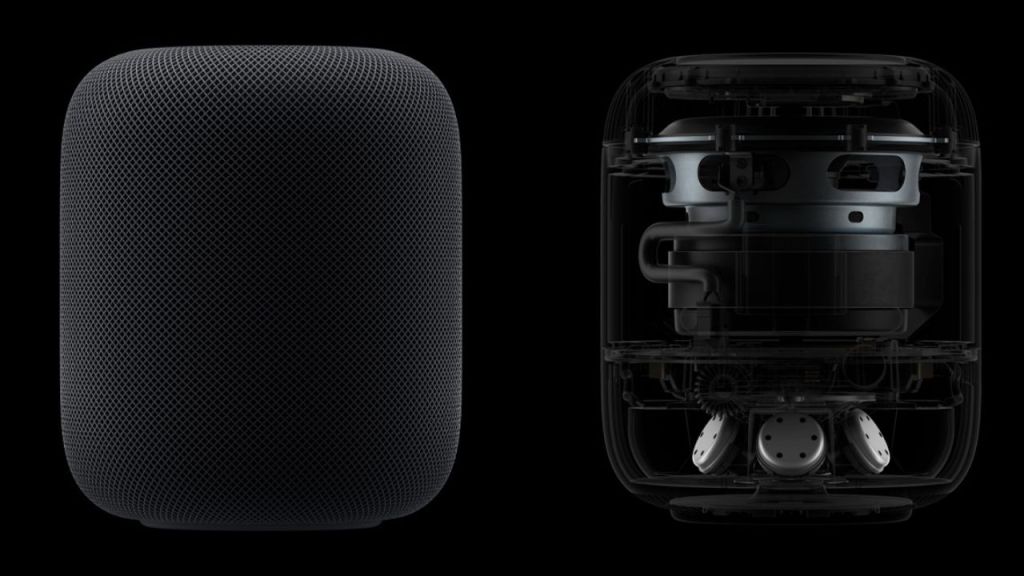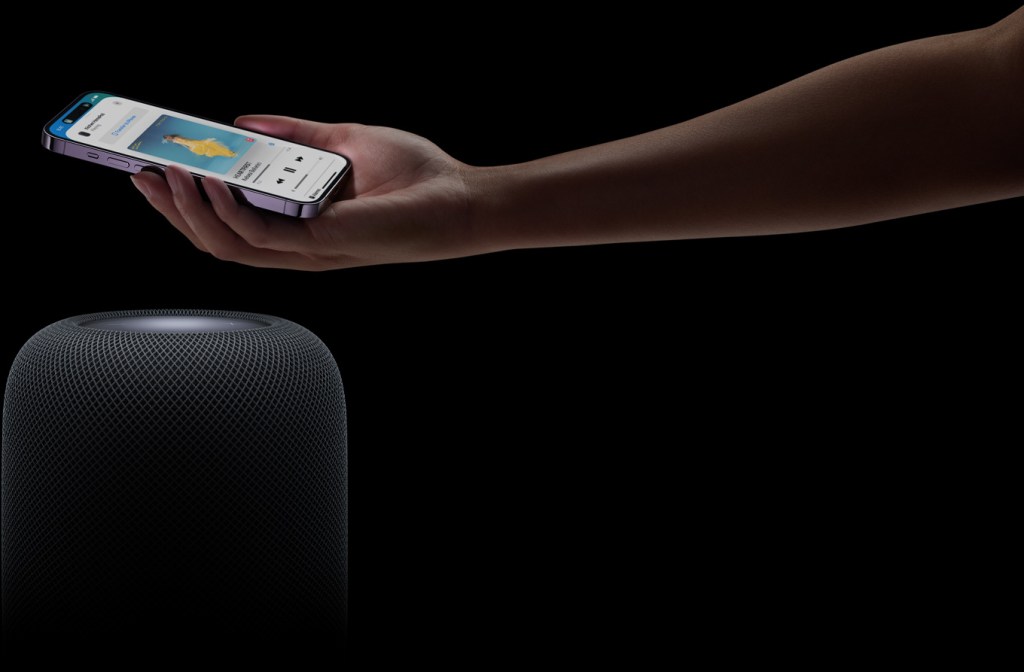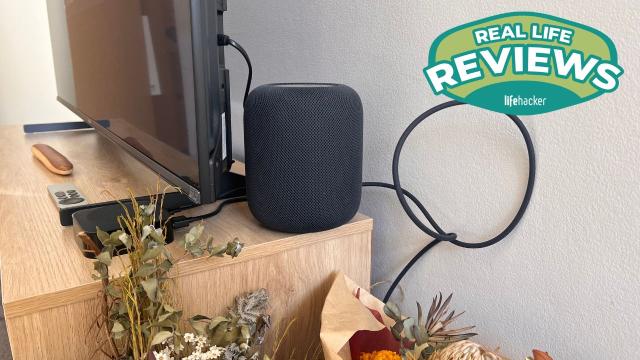Music is a constant part of my life, and by that, I mean I like to fill every minute of it with songs. I listen to music when I wake up; when I’m showering; when I cook; when I work; when I exercise, and yes, when I fall asleep. But that’s not enough, I actually want to experience the music. I want to feel like I’ve stepped into a song without needing headphones or watching live performances. I didn’t really think that was a possibility until I reviewed the Apple HomePods (2nd generation).
I’d heard about the power of these speakers before but had never really sought after it. So, when Apple offered Lifehacker Australia the chance to test out and review the HomePod 2nd Generation, I jumped at the chance.
We’ve already talked about how you can use the Apple HomePods to create a cinema experience but I wanted to focus my attention on how it can handle music.
Let’s dive in.
Real Life Reviews: Apple HomePod (2nd generation)

Setting up the HomePod
Setting up the Apple HomePods was actually a lot easier than I thought it was going to be.
All I had to was plug in the HomePod and hold my unlocked iPhone near it until instructions popped up on my screen.
In saying that, I did have to consult Apple’s set-up instructions because I had two HomePods to work with, and I needed some guidance on how to pair them.
If you do want to create a stereo pair to amplify your music quality, you just need to place the two HomePod speakers in the same room. You’ll then be asked on the Home app if you want to pair them. The stereo pairing, according to Apple, creates a wider sound stage and envelops audio than other traditional speakers.
It’s important to note that you need to update to the latest software, which is iOS 16.3.1, otherwise, you will have difficulty pairing the HomePod to your phone and Apple TV.
Once I had figured everything out, I was led to the Home app on my phone (you can do the software update to the HomePods from here), where I adjusted certain settings and set up my lounge room tab on the app.
The app itself is fine to use but it can get a bit annoying having to use an app to set up your speakers and adjust their settings. I would have preferred some sort of iOS integration through Bluetooth, like the AirPods or other speakers.
With the AirPods, at least you get a quick settings access screen through the Control Centre, which might be something that HomePods could benefit from.
If you want to change any of the HomePod settings, you’ll have to go into the Home app, tap the HomePod icon, scroll down and click the Settings button in the bottom-right corner. From there, you can then manage things like accessibility settings, audio preferences, shortcuts, Siri commands and more.
Again, none of this was necessarily bad, but it did feel a little tedious, especially given it was my first time properly interacting with the Home app.
Music to our ears
Listening to music through the Apple HomePod is nothing short of a pure delight.
The powerful capability of using the HomePods as a speaker shocked me. I expected good quality, as Apple always delivers when it comes to audio, but I didn’t expect it to be this good.

Immersive listening
My first impression when I played the first song (‘Rhiannon’ by Fleetwood Mac), I truly felt like I had just stepped inside the song, with the sound bouncing all around me.
This capability comes from Apple’s engineered audio technology, where its advanced software can deliver high-fidelity sound throughout the room. Meaning that it can adapt to whatever you’re listening to and surround you with immersive audio.
It also doesn’t matter where you place the HomePods, they will still find a way to make you feel like you’re swimming in a song by recognising when it’s against a wall so it can direct the sound outwards.
Big bass
I then listened to a bass-heavy song (‘West Coast’ by Lana Del Rey) and I was equally as impressed by the HomePods’ clean bass. Most speakers can’t really handle high volume and deliver a crisp bass, but that doesn’t seem to be an issue for Apple.
Apple puts this down to the HomePod’s high-excursion woofer, which, according to the company, drives the diaphragm 20 millimetres while its bass-EQ mic will tune low frequencies in real-time.
Crisp, clear vocals
While it’s easy to get lost in the bass, I was really pleased with how good the artist’s vocals sounded, which was something I wanted to highlight in this review. The HomePod has five beamforming tweeters around its base, which is where you get the feeling of being in the recording studio. It manages to pick up every minute detail of what feels like every instrument in a song.
These tweeters, according to Apple, direct primary vocals into the middle of the room while the background sound is reflected off the walls. This, teamed with Spatial Audio, adds to the richness of the listening experience.
Apple HomePod (2nd generation): The verdict
Although I’ve given it quite a positive review, one more thing I will say that is a little annoying about the HomePods is that they are clearly built to enhance the experience of listening with Apple Music. That is obviously going to be the case with a product like this, but it does mean that to truly enjoy the HomePod, you also have to pay for Apple Music.
Listening to music from other platforms is still impressive, but you don’t get the same immersion if you aren’t using Apple Music.
Apple Music has actually curated a playlist called Made for Spatial Audio, filled with all the songs that will give you that immersive feeling.
The Apple HomePod currently retails for $AU479.

Leave a Reply
You must be logged in to post a comment.